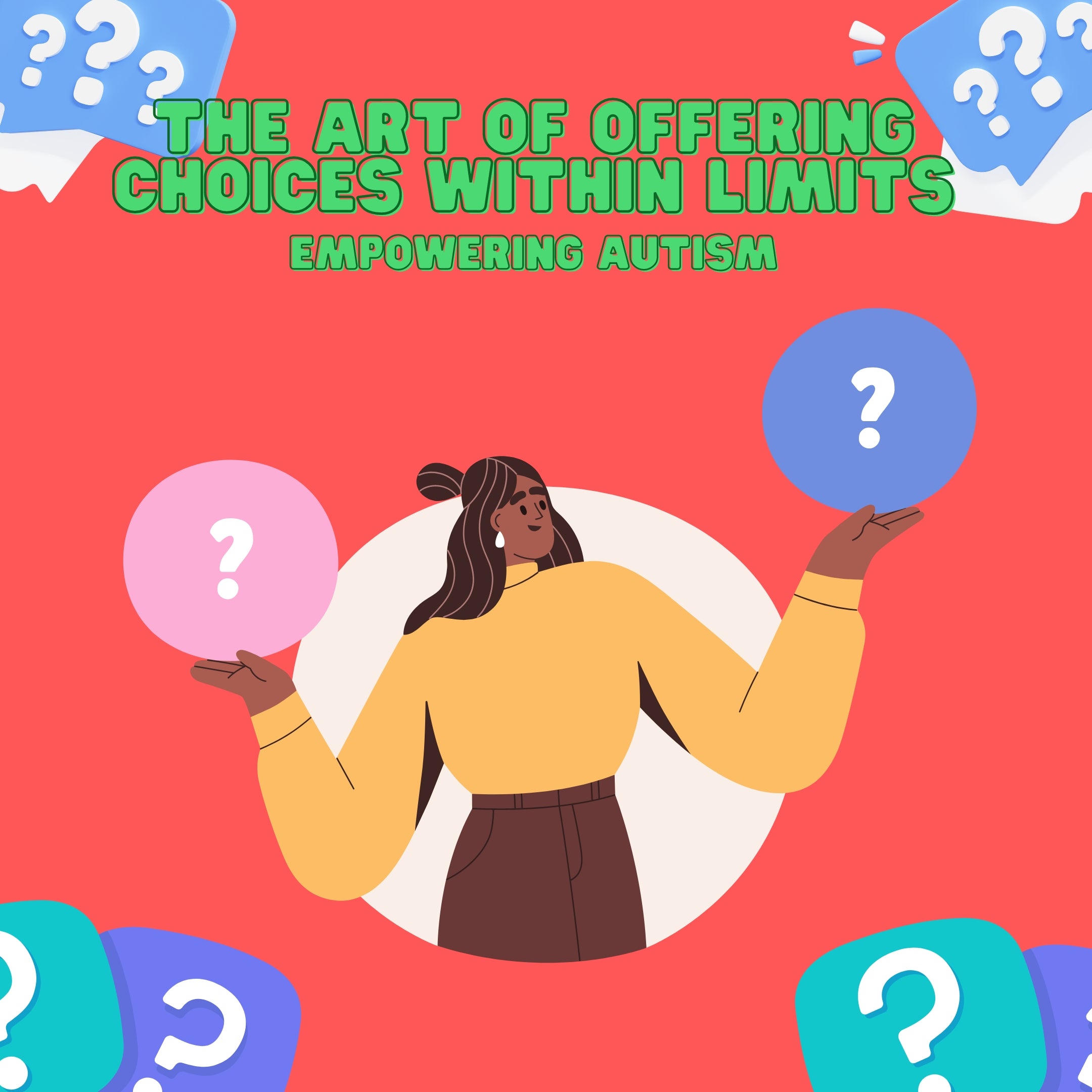
Imagine for a moment, you're in a room filled with countless options. Each one presents an entirely unique path, each with its own potential outcomes, challenges, and rewards. This can be both exhilarating and overwhelming, and for autistic individuals, this scenario can often mimic their daily experiences.
In understanding autism, it's important to remember it does not need to be "fixed". It is neurological difference in the way one perceives and interacts with the world. With this recognition, it becomes our responsibility, as educators, parents, and caregivers, to cultivate an environment where these unique individuals feel empowered, yet safe. One of the effective strategies for achieving this delicate balance is offering choices within limits.
The Power of Choice
Offering choices to an autistic child can impact their sense of control and independence. A choice, no matter how small, narrows down the choices reducing the need to overthink. Whether it's picking out clothes for the day, selecting a snack, or choosing a game for playtime, these decisions can significantly boost their self-esteem and promote decision-making skills.
However, given the neurodivergent nature of autism, an abundance of options can become overwhelming and even lead to anxiety or meltdown. Here's where the concept of "choices within limits" comes into play.
Implementing Choices Within Limits
By offering choices within a structured framework, we present opportunities for decision-making without it being overwhelming. This approach doesn't mean imposing restrictions, but rather, it's about creating an environment that is manageable and makes sense for them.
For instance, instead of asking an open-ended question like "What do you want to eat?", try offering specific options like "Would you like an apple or a banana?". Such method reduces cognitive overload, making the decision-making process easier and more enjoyable.
The Benefits of Choices Within Limits
Aside from fostering independence and decision-making skills, giving choices within limits also:
-
Promotes Understanding: By giving them clear and manageable options, we can aid in fostering a better understanding of cause and effect – a crucial life skill.
-
Develops Communication Skills: Expressing preferences and making choices can also enhance their communication skills, paving the way for more complex dialogues.
-
Builds Trust: When we honor their choices, it builds trust and strengthens the bond between the child and the caregiver.
Tips for Practicing "Choices Within Limits"
-
Keep it Simple: Begin with simple choices and gradually introduce more complex decisions as their comfort and confidence grow.
-
Use Visual Aids: Since many individuals with autism are visual learners, consider using pictures or visual aids to represent the choices available.
-
Be Consistent: Consistency is key. Make choices a regular part of their daily routine to create predictability and structure.
-
Respect Their Choice: Even if their choice isn't what you'd prefer, respect it. This builds confidence and reinforces the importance of their decision-making.
Offering choices within limits is just one of the many strategies that can help autistic individuals thrive. It’s a approach requiring patience and understanding, but the outcome — an empowered child who feels in control of their world — is worth every effort.
As we continue to better understand this unique perspective, we unlock the potential for truly inclusive environments where everyone, regardless of their neurological makeup, can thrive.

